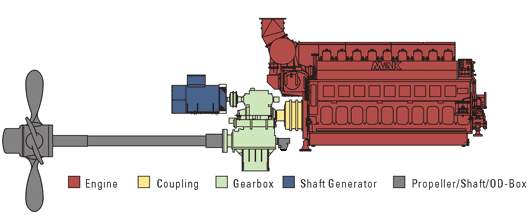The Sirius class benefited from 'production line' building. The
parts would be built at factories and building yards not
normally associated with warships, freighted to an assembly yard
where they would be pieced together to form the ship. This
worked well as long as there were no glitches in the production
lines, as occurred in 1942 when a lack of steel production
slowed down production. The ships were built with 'Escort' being
very much at the forefront of their duties. Giving them a set of
torpedoes raised the ships to Escort destroyers rather than
Frigates.
The design of the class had been first made in 1935 with updates
until the ships were put into production in 1940, the first
ships appearing in 1941
through to 1944 when production finished. The use of diesel
engines made them very popular post war, with any of the class
being offered for sale being snapped up by the minor navies.
Their slower speed counted against them in post war conditions
as the German Type XXI technology filtered through the Major
powers and the speeds of submarines and their ability to stay
submerged increased substantially. The Sirius class would not be
able to catch these modern subs. A dozen of the ships were kept
in service as Coast guard vessels which the diesels were
considered excellent for.
| Displacement | 1,800 tons standard, 2,250 tons full load |
| Length | 318 ft |
| Breadth | 35 ft |
| Draught | 13 ft |
| Machinery | 2 shaft, diesel engines, 20,000 bhp |
| Speed | 26 knots |
| Range | 8,000 miles at 15 knots |
| Armament | As completed 4 x 4" (2x2) 8 x 40mm (1x4, 2x2) 1 x Hedgehog |
| Torpedoes | 3 x 21" (1x3) |
| Complement | 160 |
| Notes | Sirius Lynx Eridanus Casiopaiea Scorpius Crux Cancer Leo Canis Andromeda Taurus Sagittarius Carina Lyra Serpens Aquarius Cygnus Corvus Ursa Cerpheus Grus Draco Delphinus Capricorn Pegasus Perseus Gemini Bootes Crater Auriga Orion Hydra Corona Borealis Pisces Aquilla |
Diesel Engines were known for their frugalness on fuel
consumption. A great benefit for escorts.
